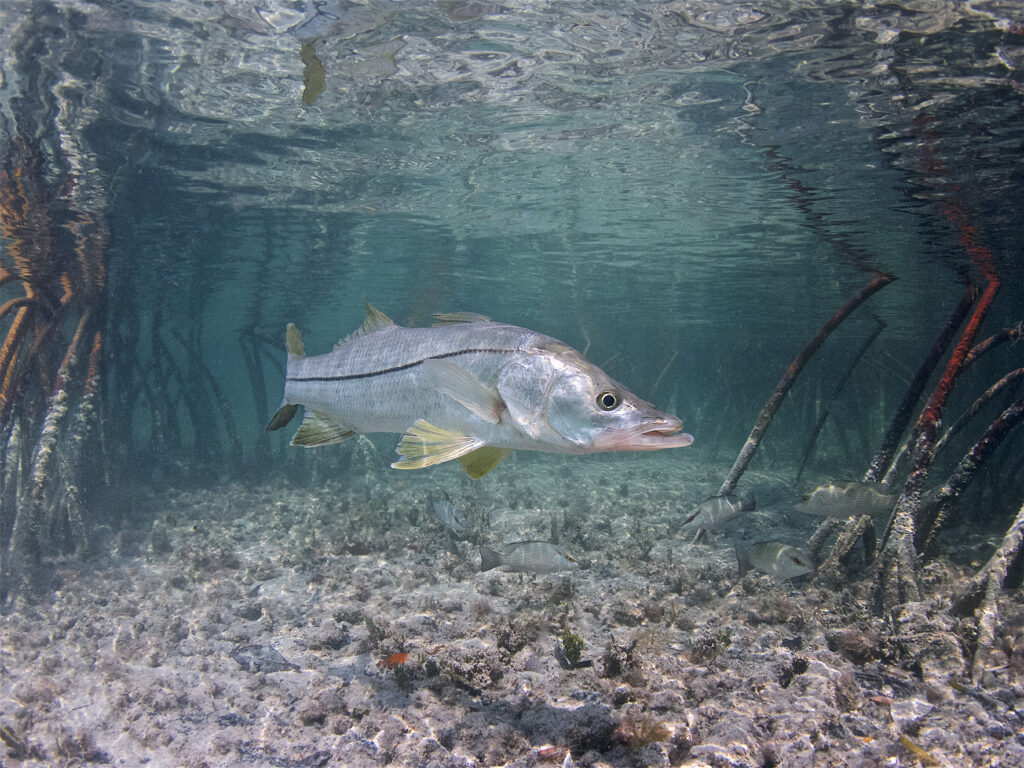Photo: Pat Ford
The Florida Fish and Wildlife Conservation Commission (FWC) recently released its draft approach to update fisheries regulations for common snook in Florida and is currently accepting public comment and recommendations. Bonefish & Tarpon Trust supports FWC’s proposed addition of regional management that will be updated regularly using a suite of metrics. However, BTT is concerned about the lack of data available for assessing habitat conditions in the proposed management plans. Please help ensure that the snook fishery is properly managed by urging FWC to keep improving its management plans to adequately include habitat condition and other environmental factors.
Below we outline a stepwise framework that you can reference in your message to FWC, as well as some helpful background information about the way the Florida’s snook fishery is currently managed.
Harvest regulations for snook have historically included two management regions (east and west coasts) and stock assessment outputs to meet Spawning Potential Ratio (SPR) goals set by the agency. The proposed harvest regulations are comprised of 10 management regions and seven potential metrics including SPR, relative abundance, habitat, harmful algal blooms, fishing effort, air temperature, and stakeholder feedback. These regions and metrics are similar to those FWC is currently using to manage redfish.
BTT recently attended FWC-facilitated meetings on both coasts and the concern was the same: Habitat. Attendees presented anecdotal evidence of the habitat decline in their home estuaries and the profound affect that it has on the fisheries and the population. A longtime guide on Florida’s west coast commented that he continues to see habitats and water quality decline along with annual red tide events that harm our estuaries. Another angler said that because of habitat declines, the number of fish we currently have is the most we’ll ever see and the population will only continue to decrease.
Anglers and the guides recognize the importance of habitat; however, it still does not have a significant place in fisheries management plans. Three of the seven new metrics (SPR, relative abundance and fishing effort) are parameters parsed out from the current stock assessment model FWC is working to improve.
While we applaud the inclusion of factors outside of the stock assessment, FWC does not have enough usable data to fully implement these metrics. Most notably lacking is adequate and up-to-date habitat information. To address this issue, BTT recommends a stepwise strategic plan to properly manage snook:
- Select metrics that are highly relevant to snook biology and harvest.
- Determine what data are available for those metrics for each of the proposed management regions.
- Highlight the data gaps existing in the metrics.
- Collaborate with other agencies and entities to fill those data gaps.
- For remaining data gaps, look at internal programs currently in place to fill those gaps (this may mean adjusting current or creating new programs).
- Design a comprehensive sampling program that provides appropriate and sufficient data to fulfil the proposed habitat- and water quality-based metrics and take a lead role in a collaboration with other agencies and entities to ensure this sampling strategy is implemented.
If we wait until we see further declines in the adult fishery before taking action to address these data gaps, then it’s already too late. We know from research in the Indian River Lagoon that reduction of healthy juvenile habitats will decimate the snook population.
We all have the same common goal: healthy stocks that enable anglers to keep fishing. Consistently restricting harvest is not the long-term solution to achieving that goal. Better habitat and better water quality to support productive fisheries is the answer.
Help BTT improve snook management by submitting comments to FWC to let the agency know that its proposed regional, multi-metric approach is a good start, but that a strategic plan to collect and apply more and better data is needed to properly inform those metrics.




